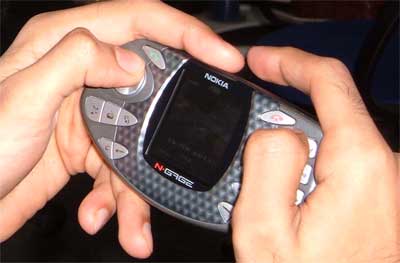 These days Rohit Wadhwani is spending a lot of time on his mobile phone. And no he is not speaking on the phone, nor is he smsing, even if you find him fiddling with the buttons on his ngage phone, whenever he gets the time. Rohit has become the new gen mobile game devil and he is besotten with the wireless gaming options his multifunctional handset offers him. He is increasingly anting up rupees downloading the latest game that his phone company is pushing at him. And the games have reasonably high graphics, and a good amount of animation too!
These days Rohit Wadhwani is spending a lot of time on his mobile phone. And no he is not speaking on the phone, nor is he smsing, even if you find him fiddling with the buttons on his ngage phone, whenever he gets the time. Rohit has become the new gen mobile game devil and he is besotten with the wireless gaming options his multifunctional handset offers him. He is increasingly anting up rupees downloading the latest game that his phone company is pushing at him. And the games have reasonably high graphics, and a good amount of animation too!
Welcome to the world of gaming, where technology is moving at gee-whiz speeds. Technology giants in the pursuit of extending the utility and capability of wireless technology, are dialling in billions of dollars into development.
The push has resulted in the emergence of a host of new concepts, applications and protocols like Blue Tooth, Manet and so on. Parallel to the advancement in wireless technology, the consumer universe is witnessing a thrust on interactivity. All these have combined to make the mobile phone a hot device.
One of the features and services that handset manufacturers and network operators are betting big on, is wireless gaming. Annualy the global turnover for wireless gaming is $550 million. The market in India is currently around $8 million and is expected to double by December 2005.
The Indian market has 4 to 6 large game development companies with 50 seats and more, while there are another 100 odd small game developers with 5 to 10 seats which are dedicated to developing for the wireless.
Leading Indian game companies like Indiagames, Dhruva Interactive and Paradox which develop for a range of platforms such as PC, console, wireless and online are very optimistic about the wireless gaming scene.There is also Mobile2Win which is majorly into wireless gaming and solutions. These companies have moved up the value chain from being just developers to being license holders, developers and publishers.
While game development involves a lot of programming there is a substantial amount of animation too. The involvement of animation is all set to increase with the advent of 3D gaming and with technologies similar to flash being adapted. The development cycle for a mobile game takes from about 5 days to 5 months depending upon the kind of game being worked on. This includes game concepts, scripting, programming, character design, animation, level making and testing.
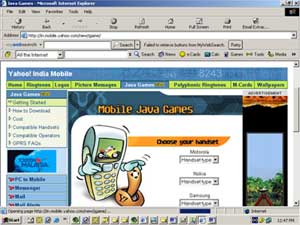
Carriers (Network Operators) such as Airtel, Hutch, BPL Mobile, Reliance and Tata Indicom and portals such as Rediff, Yahoo, Indiatimes and Sify are the distributors for mobile games in India. Besides the publishers, developers and distributors, there are also a few content aggregators who aggregate content from across the world and tie up exclusively with network operators.
Across Asia and especially in China and India, the growth in cellular subscriptions is blazing. China alone has 330 million mobile phone users. A lot of developers from across the world have been attracted to this market owing to the sheer numbers. India too is a large market and curently has 40 million users. The number of Indian users is expected to touch 80 million by Dec 2005. There are around a million GPRS consumers and 1.4 million java enabled handsets. The number of paid downloads for GSM handsets in India is around 600,000 a month, while there are another 15 million free game downloads in the CDMA space.
Such an exciting opportunity cannot be overlooked by any content creator or IP holder who is serious about business.
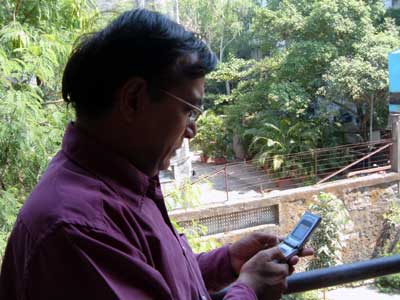
THE CONSUMER – CONSUMPTION PATTERNS
A general assumption that teenagers and college kids are the TG for mobile games holds true to a certain extent. However there is an equal number of gaming activity across adults too.
Commenting on this Vishal Gondal MD of the Mumbai based Indiagames says,”Defining TG by age is one way to look at it, however it would be more accurate to define our TG by mindset. The mindset of a person who visits Barista is similar to the mindset of our TG”
K Rajesh Rao, CEO of the Bangalore based Dhruva Interactive comments,”The mobile gaming consumer is not just the gamer who wants to play on with the mobile; a large segment is hitherto non-gamers who are experimenting and taking on to games and other mobile content such as ringtones. So clearly this market is evolving, it is quite exciting actually”
Mobile2Win country head Rajiv Hiranandani offers another interesting insight saying,”Online score submissions are driving good revenues. There are quite a few C.O.Gs (closed user groups) which regularly have wireless gaming competitions. There groups keep track of the new games that are to be launched and plan competitions around the launch.There are a growing number of mobile gaming communities that group up based on genre and choice of game play”
“Download numbers are highly dependent on timing of the game’s release, the position of the game on the operator’s game deck and of course promotional activity”
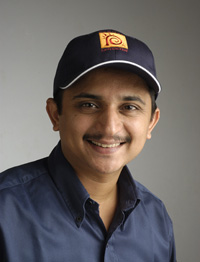
The timing of a game release also has a lot to do with downloading activity. Commenting on this, Dhruva’s Rao says,”Download numbers are highly dependent on timing of the game release, the position of the game on the operator’s game deck and of course promotional activity. We released Pat Cash Tennis in UK at the time of Wimbledon, Vodafone gave it the Game of the Week position during the final’s week and we had promotional activity that included giving away Pat Cash signed Tennis racquets, T-shirts and bandanas… and a grand winner would get to play with Pat Cash. When you do this you see a 10x increase in downloads”
CDMA players like Reliance Infocomm currently offer free gaming. The scene out here is more mass oriented. Anurag Khurana, CEO of the Reliance owned Paradox Studios says,”Reliance always targets the masses. As gaming on the Reliance network has uptil now been a free service, there are a whole lot of people whom we have observed indulging in gaming activity. In fact my driver is one of the most avid gamers that I have come across” Anuraag’s statement gives us another pointer. A person with a mobile device tends to start gaming while he plays the waiting game.
CONTENT
Games spun around popular icons and brands are a big draw. Brands, Bollywood and Cricket rule the roost here.
“Indiagames strategy is to take licences to established brands which lend themselves well to gaming and develop products around them.These brands help us penetrate markets”
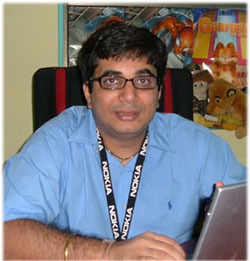
Amongst the developers, Indiagames has built up a successful model wherein it acquires licenses for popular icons and properties and develops games around them. In the past few months the company has developed games around The Day After Tomorrow, Bruce Lee, Buffy the vampire slayer and Spiderman.
The title shot of Indiagames’ mobile game around Buffy
Commenting on Indiagames’ content strategy Gondal says,”Indiagames strategy is to take licences to established brands which lend themselves well to gaming and develop products around them.These brands help us penetrate markets. Currently we are looking at a big brand from the orient. We are also coming out with a Bruce Lee game which we are sure will do well in China and the Asean countries as Bruce Lee is a big icon there”
Dhruva’s Rao speaking about his company’s content strategy says, “Dhruva’s focus is on the mass-market consumer and not the ‘hardcore’ gamer. Especially in the India, the market is nascent and we have a unique opportunity to create a broad based audience by making games with mass market appeal.”
“Our latest game is around Charlie Chaplin, who is a truly mass market brand, and the games will be simple and fun to play for people of all age groups. In India there has to be a lot of experimentation with different types of gameplay and content to figure out the consumer preferences. There are some pointers for this from our local movies and television, but these are a ‘passive’ forms of entertainment, whereas gaming is an ‘active’ form of entertainment. So there are bound to be differences, but we have to discover them through our products” adds Rao.
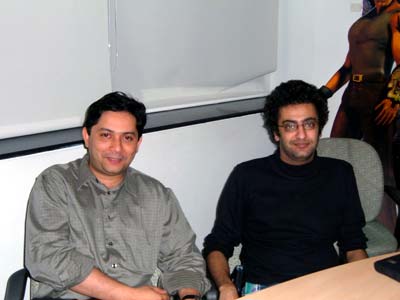
“We are focusing on some very high quality content now, not necessarily high end, but great quality. Even on the same phone we want to pull off better games than others”
Paradox is making a transition from quantity to quality, the company is currently developing 2 high end titles around Brands. One is a racing game around Australian F1 racing legend Peter Brock and another one around Hollywood Toughie, Jean Claude Van Damme. Paradox Chief Marketing Officer Salil Bhargava says,”We are focusing on some very high quality content now, not necessarily high end, but great quality. Even on the same phone we want to pull off better games than others”
The M2W Jassi game
Talking about Jean Claude he says,” Jean claude is personally involved in the making of the games. We sent across AVIs of the game to him and he suggested a few changes. He added 2 moves and the name of the game ‘Van Dammage’ too, was suggested by him”
Mobile2win has its plans firmly focused around Bollywood and Cricket. In the 18 months of its existence, M2W has developed content around flicks like Dev, Main Hoon Naa, Lakshya and now Sholay. It has also developed games around serials like the popular TV show Jassi. In cricket the company has a Sachin game besides quite a few generic cricket games.
M2W Country business head comments,”We have a combination of arcade games and games based on Bollywood and Cricket. Having a brand name always helps” he also points out that “Games developed around occasions like Diwali and Christmas do well too”
THE DEVELOPMENT CYCLE AND THE INVOLVEMENT OF ANIMATION
The development cycle for a mobile game includes game concepts, scripting, programming, character design, animation,level making and testing.The cycle is divided into 3 parts, Pre Production, Production and testing.
“We have a combination of arcade games and games based on Bollywood and Cricket. Games created for occasions like Diwali and Christmas also do well”
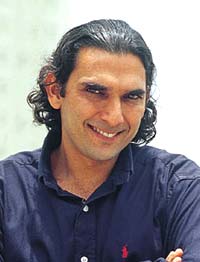
Pre Production involves concept art, game design and game dynamics. Production is final concept arts, modeling, animation and programming. Animations and characters for the wireless have extremely low poly counts.Testing is a big task for game developers. There is a wide range of formats, platforms, carriers and handsets that the games have to be tested for.
Commenting on this exhaustive process Dhruva’s Rao says,”A factor specific to mobile games is that a game needs to work on more than 50 different phone models, and today more than 50% of the development time goes in porting, testing and certification of games before a mobile operator will place a game on their consumer facing games catalog. Typically there are separate teams for porting and testing, some companies prefer to outsource this activity”
The Indian game developers take their games seriously and spare no cost or efforts to enhance the entertainment value that their games offer. Calling game development a part of the entertainment business, Indiagames MD Vishal Gondal says,” We are in the entertainment business, it is not about trying to save money in production, it is more about making a product that is a hit. We invest good amounts of money into all the aspects of our game.”
On being asked to specifically comment on animation, Gondal says,”Animation for us is an art form, it has to be topmost quality. At times we pay thousands of dollars to develop art for our games”
Commenting on the involvement of animation , Paradox CEO Anurag says,”Developing games for the wireless, currently involves relatively lesser usage of animation, but the scene is set to change with the arrival of 3d mobile gaming when the usage of animation will be on par with that for a PC, besides, exciting standards like flash are also on the anvil”
M2W’s Rajiv comments,”Going by current standards, flash is an inhibitor due to filesize and bandwidth. Animation is around 20 to 25% of the total game development”
“We are doing a lot of R&D around multi player games. Indian bandwidth makes it difficult for such games. We are developing them specifically for the international market. Our new game should be ready within the next 8-10 weeks.
DISTRIBUTION & REVENUE SHARING
The distribution pipeline that extends from IP owner to the consumer includes, the IP owner, Publisher, Content developer, Carrier and the consumer. There are also Portals and aggregators that could be part of the distribution.
Usually game publishers identify properties around which they can have succesful games. They then approach the owners of the desired IP and purchase the license. Next they assign a developer the task of developing a game around their content. Once the game is ready, the developer is paid his development fees and the publisher then releases the game to its partners which are carriers and portals. The carriers and portals then offer the game to the consumer via downloads, which is done by smsing to the respective shortcodes or via portals. The download fee is then shared by the carrier and the publisher. A lot of developers are moving up the value chain by becoming publishers.
With competition getting fierce, the carriers now prefer to have exclusive games and more so during the first few months of a game’s launch.
While players like Reliance Infocomm currently offer games for free, the GSM market has games at various price points. The price points are usually Rs50, Rs 99 and Rs150.
The International Market – INDIA CHANTS THE QUALITY MANTRA
The International market for wireless gaming is a staggering $550million. The Indian game development companies are now playing the game more as publishers than just as developers. 75 TO 80% of their turnover comes in from the international market. All of the big development companies have distribution and marketing partners abroad.
While a majority of the 100 odd small sized game development studios in the country are service oriented and offer a low cost solution to the International client, the big studios are bullish on quality and do not use low cost as their plank while pitching.
Says Indiagames MD Gondal, “In Most of the production deals we do, our rates are higher than the rates of our European and American counterparts. It is not for low cost but for our expertise and quality that Indiagames is assigned jobs”
Paradox marketing chief Salil quips,”Our USP is quality, we don’t say we are Indian and we will do it cheap. No doubt that we are cost competitive, but that is not our plank for selling. Our plank for selling is the quality of our games, we can do that quality at a better price than anyone else can. Our first line of entry is not price”
Indiagames is planning a major international expansion programme, Gondal identifies Europe, US and Japan as major markets. He also comments on China’s potential “In places like China which is a huge market for us, we assign distributors who deal with all the portals and carriers. We do all the development work with the native dialect and script.”
Paradox Studios Salil says,”We have got the Van Damme license from his personal licensing agency and are doing this game in collaboration with US Based 2 thumbs entertainment. Because they are based in the US, 2thumbs will market the game in the US and the marketing for the rest of the world will be done by us. Van damme shall be marketed worldwide and sold as a Paradox “ 2thumbs presentation”
Dhruva’s Rao informs,” Today Dhruva has succeeded in its first objective of creating and establishing an Indian games company that is globally respected. Our next objective is to become a globally respected company with a global presence. We have an office in UK and shall have anothe roffice in California by march’05”
M2W’s Hiranandani says”Seimens is an investor in M2W, they help us make inroads into the international market. We have 108 partners across the globe”
MANPOWER & SKILLSETS
Just as with the Animation and FX industries in the country, there is a shortage of trained manpower in the gaming industry too. The game developers are on a constant recruitment drive as they grow and expand.
Indiagames which is currently 165 people strong is on a major international expansion spree and between all its operations which includes developing for online, PC and console is looking to be 300 by the end of next year.
Paradox too currently at 85 people is looking to grow bigger, the growth is in both, its wireless and console and pc game development sections.
Says, Dhruva’s Rao,”We have 60 people, our Console division is much bigger than our mobile team. We have an office in UK, for managing our projects in Europe and for sourcing talent that compliment ours, currently the UK office has 3 people and will eventually have around 10. We will have an office in California by March 2005, again here we will have a team of around 10. Of course our biggest constraint in India is that we cannot grow quickly enough due to lack of game-ready manpower that is of international quality. By middle of next year we will have our first studio in the East, this studio will have 100 people. The setup is already underway”
Working in a game development company pays well. Indiagames’ Vishal quips” The entry level salaries for programmers at Indiagames are on par with giants like Infosys. We are hiring a lot of forieners- the criteria is …who is best for the job? and we are willing to pay top dollars to get the best of the talent”
As in defining consumers, mindset is the criteria that the studios look out for while recruiting.”It is not skill sets but mindsets that are important while getting in people to work here” says Paradox Studios’ Khurana.
The future
 [/caption]
[/caption]
The future for India’s mobile game development community looks bright and alluring. Even as this industry moves into top gear, there is a critical issue that it needs to tackle. The issue of IPR Copyright laws.
“IPR and Copyright laws have to be strengthened and the employers have to be educated about how essential and critical, client confidentiality is” says Indiagames’ Gondal.
As the number of cell users in India multiplies, the mobile phone is going to emerge as one of the hottest devices that marketers, service providers and the entertainment industry shall target. The emerging popularity of wireless gaming holds a lot of advergaming potential. Already M2W has developed advergames for companies like Castrol and is in the process of making a few more advergaming deals.
The feel that one gets is that mobile gaming is going to get bigtime. The segment is drawing media attention as never before. Wireless gaming seems set to snowball in the future.
Content creators…. the future beckons!
